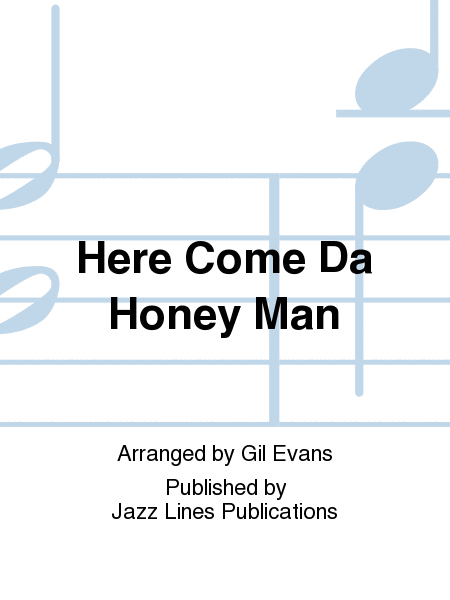Here Come Da Honey Man
As Recorded by Miles Davis and Gil Evans on 1958's Porgy and Bess
-
Ships in 2 to 3 weeks
Details
Description
SKU: JL.JLP-7553S
As Recorded by Miles Davis and Gil Evans on 1958's Porgy and Bess. Edited by Rob DuBoff, Dylan Canterbury, and Rob DuBoff. Arranged by Gil Evans. Range: Trumpet 1: G5. Ballad. Score. Published by Jazz Lines Publications (JL.JLP-7553S).Gil Evans's arrangement of 'Here Come Da Honey Man' is the shortest track on Miles Davis's 1958 version of 'Porgy and Bess.' In the original opera, it serves as a brief but effective introduction of Peter, the eponymous 'honey man,' as he arrives in Catfish Row to pedal his wares. A rubato introduction in the woodwinds and horns eventually sets up the introduction of the rest of the orchestra at measure 4. The melody is carried out by the trio of solo trumpet, alto saxophone and trombone. Despite the simplicity of the melody, the underpinning backgrounds are surprisingly complex. The horns and low brass provide some subtly pulsating held tones, while the flutes and trumpets play a lengthy and twisting flurry of sixteenth notes. The arrangement eventually tapers off and fades out beginning at measure 16. It is important to pay attention to the multiple time signature shifts throughout the arrangement. Although the tempo remains the same, maintaining a steady count is absolutely necessary, as the intricate interweaving of the ensemble figures are reliant upon precise execution in order to work. It is also important to maintain a minimal volume level throughout the arrangement; the orchestra should never exceed a medium soft dynamic throughout.

 Share
Share